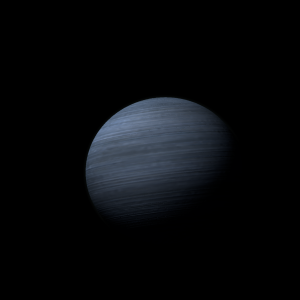|
|
Space Astro
|
Info for exoplanet "Myozaza'ta"
| Scientific (actual) data |
|---|
| Name | HD 4917 b |
| Planet status | Confirmed |
| Mass sini | 1.615 |
| Radius | 1.224 |
| Orbital period | 400.5 |
| Discovered | 2013 |
| Updated | 2018-12-20 |
| Publication | Published in a refereed paper |
| Detection type | Radial Velocity |
| Mass measurement type | Radial Velocity |
| Radius measurement type | Theoretical |
| Star name | HD 4917 |
| Right ascension | 12.78° |
| Declination | -12.93° |
| Mag v | 8.04 |
| Star distance | 134.4 |
| Star mass | 1.32 |
| Star radius | 5.01 |
| Star sp type | K0III/IV |
| Star age | 2.4 |
| Star temperature | 4802 |
| Wikipedia article | HD 4917 b |
Back
| |
| Fictional info (?) |
|---|
| Suggested name | Myozaza'ta |
| Planet type | Cold planet |
| It is the coldest planetary atmosphere in its solar system, with a minimum temperature of 35°K (-238°C), and has a complex, layered cloud structure with molecular hydrogen thought to make up the lowest clouds, and nitric oxide the uppermost layer of clouds. |
| Atmosphere | Nitric oxide | 36% |
| Molecular hydrogen | 26% |
| Water vapor | 25% |
| Ethane | 7.4% |
| Xenon | 4.7% |
| Ozone | 0.38% |
| Ammonium hydrosulfide (NH4SH) | 0.15% |
| Sulfur dioxide | 0.0059% |
| Carbonyl sulfide | 0.00052% |
| Atmospheric pressure | 0.03 bar |
 |
| Moon | Agyoho Pu | Very small round gaseous planetoid |
| Google search for Myozaza'ta |
|
Website by Joachim Michaelis
|
|
|
|